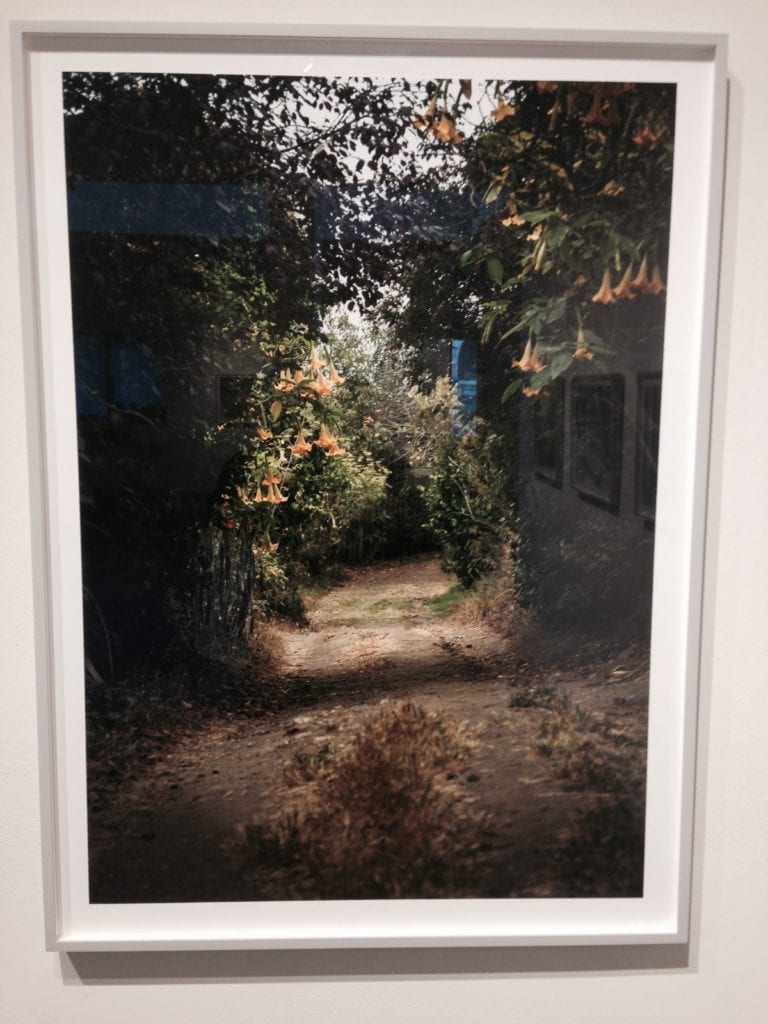
Story and photos by Murray Schneider
Jean Conner and John Priola, Glen Park’s green-thumbed neighbors, can put on quite a show, and they did exactly that on January 7 when Gallery Paule Anglim premiered an exhibit of their collages and photographs.
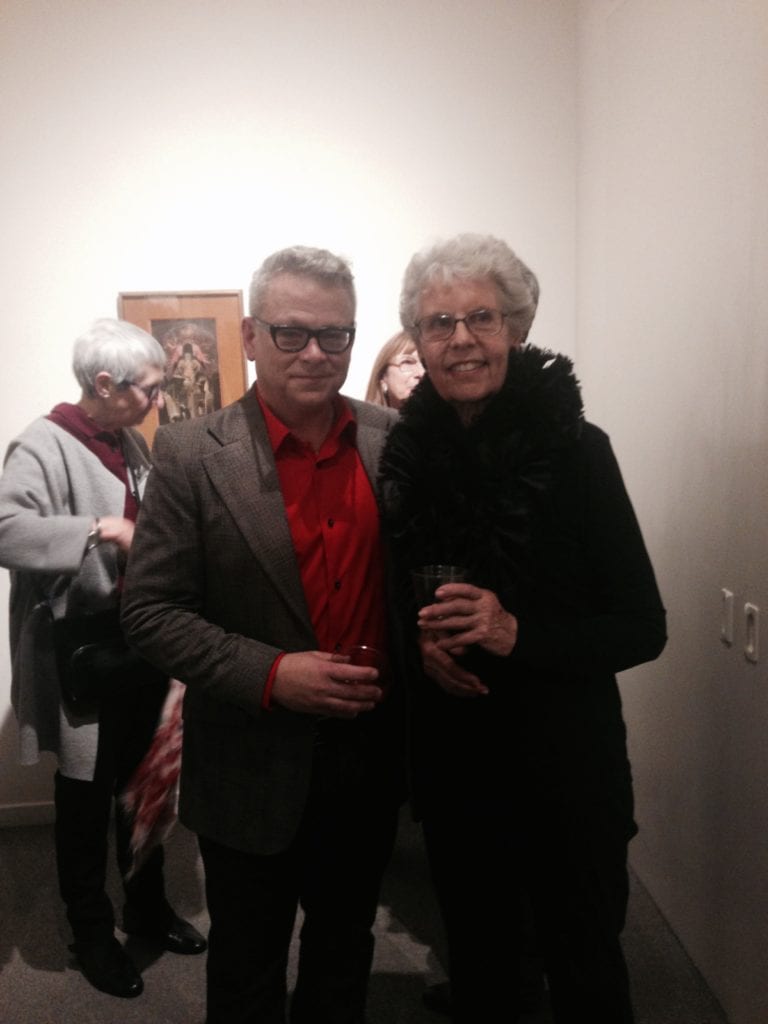
The following evening at an exhibition reception, Conner, who lives on Sussex Street, and Priola, who resides on Surrey Street, greeted hundreds of friends, family, artists and students at the gallery’s 14 Geary Street site.

“It’s the largest crowd I’ve seen at the gallery,” said Conner, a veteran of past openings, which have witnessed the likes of her friend, beat poet Michael McClure in attendance.
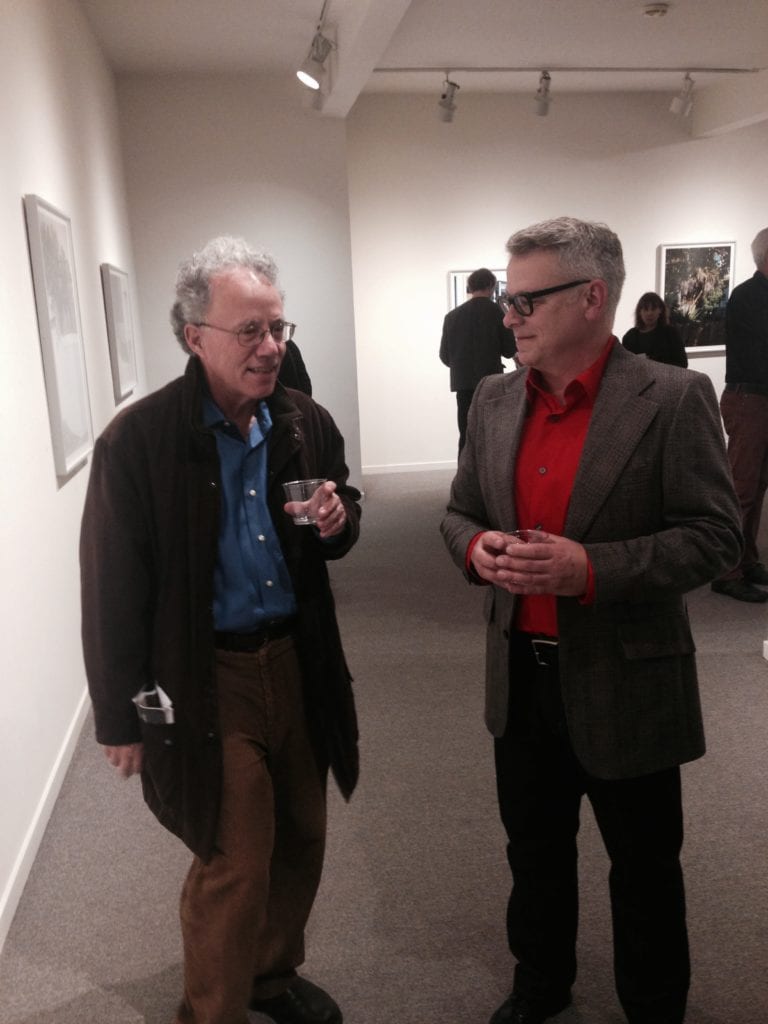
“It was certainly a packed opening,” said Christine Ancalmo, a gallery associate. “It was lively, with anywhere from 200 to 300 people.”
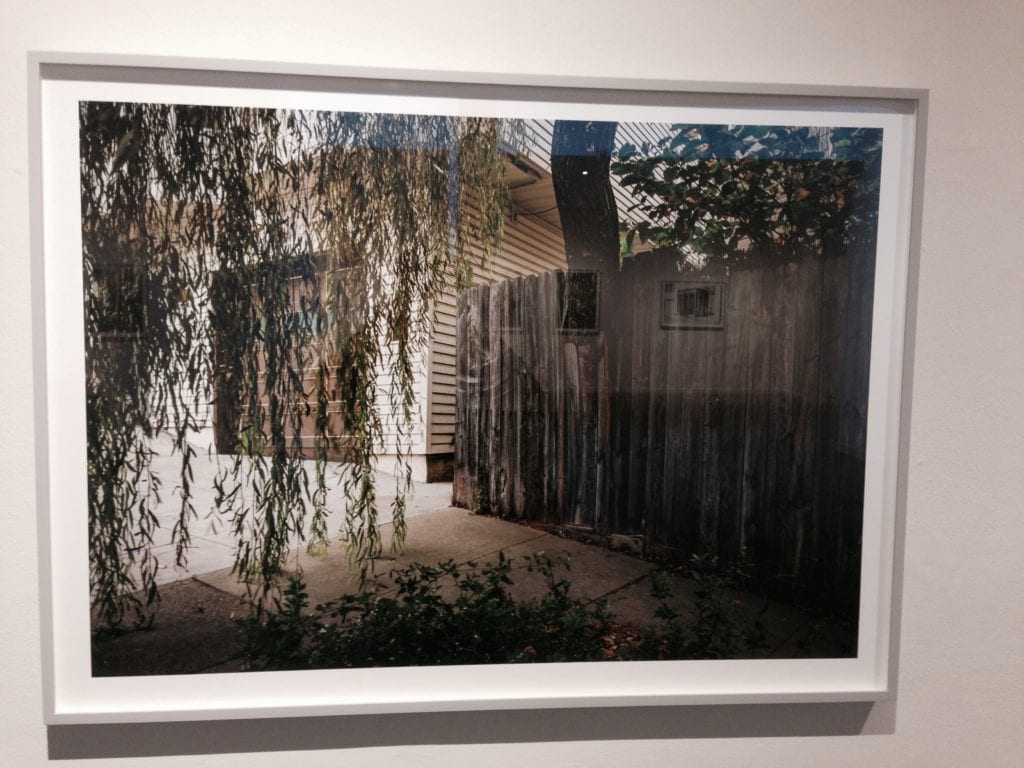
Walking through Glen Park, one would never suspect that Conner and Priola are both celebrated artists whose work has appeared at the San Francisco Museum of Modern Art, the Metropolitan Museum of Art and the Art Institute of Chicago.
It would be far more common to run into Conner strolling to Glen Canyon for a Friends of Glen Canyon Park weekly work party, or observe Priola kneeling over a Bosworth Street median, nurturing one of the scores of drought-tolerant succulents he has planted.
In fact, “Nurture” is the name Priola lent to 21 of his color photographs that will continue hanging at Gallery Paule Anglim through February 7.
“The show is seen as nurture and nature and both are represented in the work,” said Priola, who teaches photography at the San Francisco Art Institute. “I wanted to pose the question in the viewer’s mind.”
Glen Park habitués won’t have trouble recognizing Priola’s subjects, which are familiar to anyone who has wandered Sussex, Chenery and Laidley Streets.
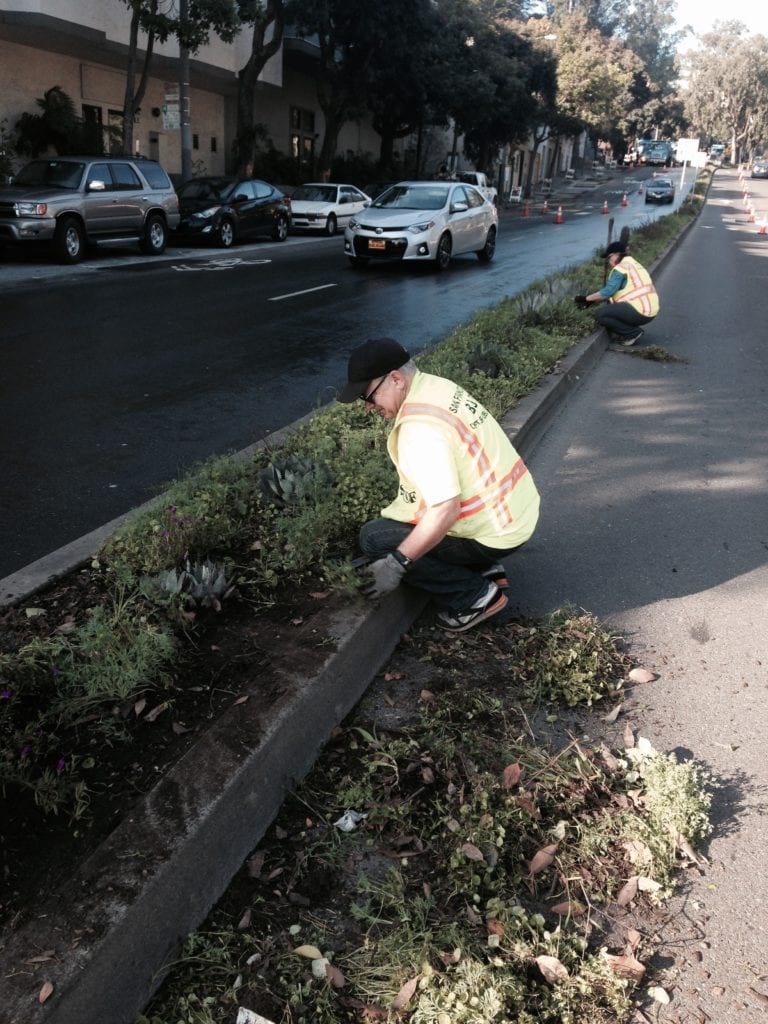
His photograph of Ohlone Way, titled “Alley,” will seem familiar.
Branches from over-arching trumpet trees serve as a canopy above a scarred path. The feeling the photograph conveys is of beckoning one farther and farther along the sequestered lane.
“I’m a romantic at heart,” admitted Priola. “I heard this several times at the opening and I absolutely agree.”
At the same time his photographs of modest neighborhood domesticity are disquieting, conveying tensions that accentuate a dichotomy in our oft-fumbled attempts to bond pristine nature to prosaic dwellings.
Such is the case with “Grey Wall,” a 2014 archival pigment print, that depicts a woe-begotten plant snaking along a trellis in front of a mismatched painted grey wall. Or a sad and drooping willow looking like it might be more comfortable in sultry tidewater Virginia than Mediterranean-climate Glen Park. Framed by a fence, long overdue for a welcome coat of paint, “Willow,” another 2014 archival pigment print, conjures up an image of nature running rife, cohabiting uneasily with man-made surroundings and in need of a tad more nurture.
“I am interested in people and how they tend plants,” said Priola, so I want to understand people via plants.”
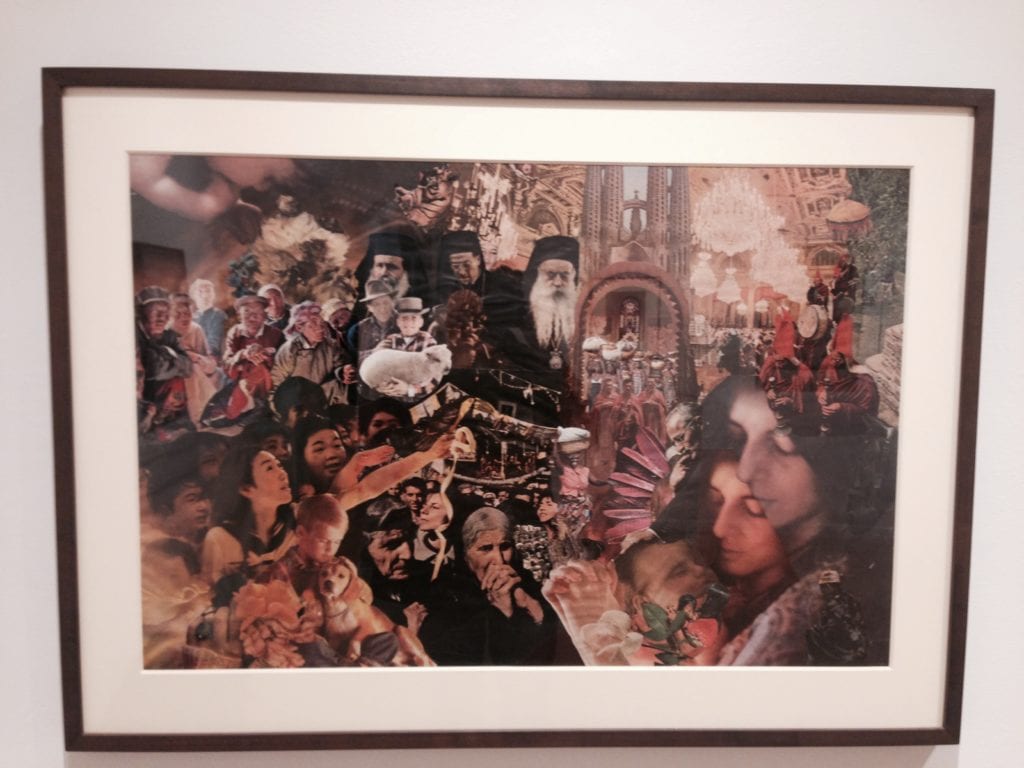
Working in the medium of collages, Jean Conner’s 13 creations hang in a Paule Anglim room next to Priola’s photographs. Each is a potpourri of images culled from popular American culture between the early Sixties and now.
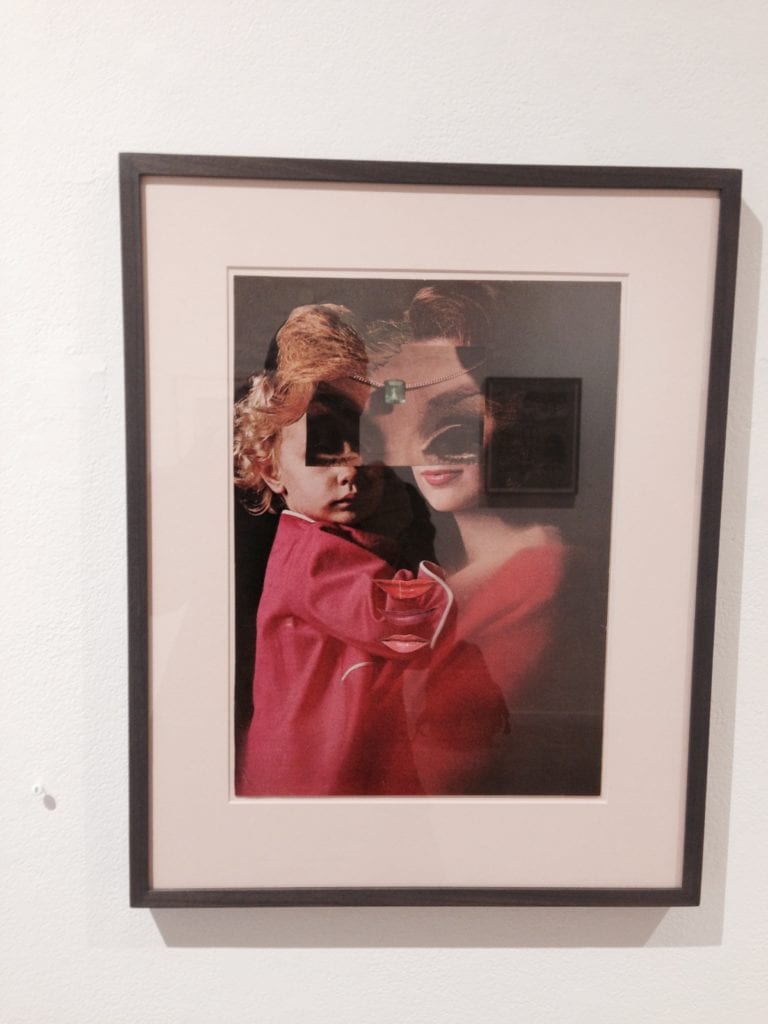
Conner’s range is no better experienced than comparing “Adoration,” 1973, a mosaic of supplicants across epochs and continents adoring Madonna and her child, with “Untitled,” a 1980 collage depicting a child in the arms of her mother.
The wife of artist Bruce Conner, Jean Conner arrived in San Francisco in 1957. She’d studied in her native Nebraska and graduated with an MFA from the University of Colorado. Both she and her husband gravitated to the Beat scene that flourished along Grant and Columbus Avenues in the mid-twentieth century.

While Conner and Priola’s artistic mediums are different, their shared interest in plants and contributing to the neighborhood are common denominators.
Conner is an integral member of the Glen Park Garden Club and for over a dozen years penned a column for the Glen Park News on gardening and Glen Canyon environs. She still finds time to volunteer in the canyon twice a week and to tend the area behind her house that adjoins storied Penny Lane.
“Jean was part of the advisory group from the Glen Park Garden Club that contributed expertise on plants and techniques when we planned Penny Lane maintenance,” said Adam King, who lives on Diamond Street and who spearheaded the lane’s restoration. “Jean also keeps her patch of the lane going with native plants.”
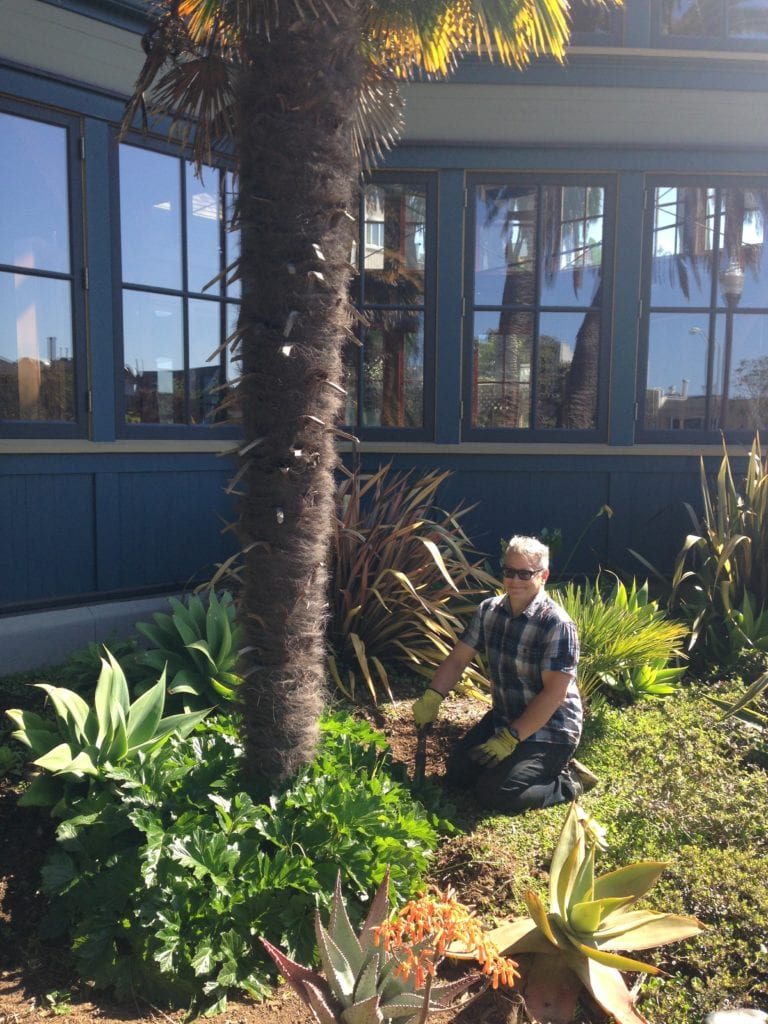
John Priola has no trouble keeping pace with his neighbor.
“The number of hours I spend on gardening is based on the seasons, but I’d say about eight-10 hours a months,” said Priola, who experienced a boyhood surrounded by plants, shrubs, trees and crops. “I was raised on a Colorado farm, so when I ran out of room in my Surrey Street yard and a few neighboring sidewalk strips the median called out to me.”
“My father rented 100 acres with field corn, harvested it as silage for feed and raised sweet corn that we sold out of our yard for eating,” he continued. “On five out of seven acres we owned and lived on we had a tree nursery, and we’d sell blue spruce to landscape architects.”
“Those spruce trees put my two older sisters and me through college,” he said, smiling.
“Like Jean, John contributed to the work in Penny Lane,” said Adam King, who is himself an architect at Richard Beard Architects. “John’s generously donated and installed many succulents and drought tolerant plants.”
Donating his time to the San Francisco Parks Alliance Street Park Stewardship Program and volunteering at both the Stanford Arizona garden in Palo Alto and the Sunnyside Conservatory still leaves Priola time to teach, take his photographs and nurse Bosworth medians.
Which is exactly what he did on January 17, a week after the Gallery Paule Anglim exhibit opening. With 10 other neighborhood volunteers, Priola spent the morning weeding the medians from Lippard to Elk Streets. Protected by DPW cones, Priola and his crew weeded around agave, cacti and ice plant, careful to create breathing space for California poppies.
“I love plants so much I get obsessed with growing them and sharing them,” said Priola. “The medians are something I feel can bring pleasure to people and their surroundings.”
“Simply put,” he said, “I suppose the median work is a practical application of the metaphorical meaning of my photography.”
It all comes back to both nature and nurture.
Jean Conner returns each week to Glen Canyon’s 70-acre natural area and provides needed park management, thwarting invasive plant species and engaging in habitat restoration.
In his turn, John Priola tends Bosworth Street succulents on a strip of San Francisco earth along a significant north-south roadway corridor.
“I tend to grow things hard, as in let nature run the bulk of the show,” said Priola.
That’s not to suggest nature trumps nurture.
Drive by Bosworth Gardens or walk along Islais Creek and see for yourselves.
Readers can get a closer and more through look at Bosworth Gardens by going to www.bosworthgardens.blogspot.com
Readers can go to John Priola’s website www.jjohnpriola.com and see “Nurture” and other of his photographs.
C